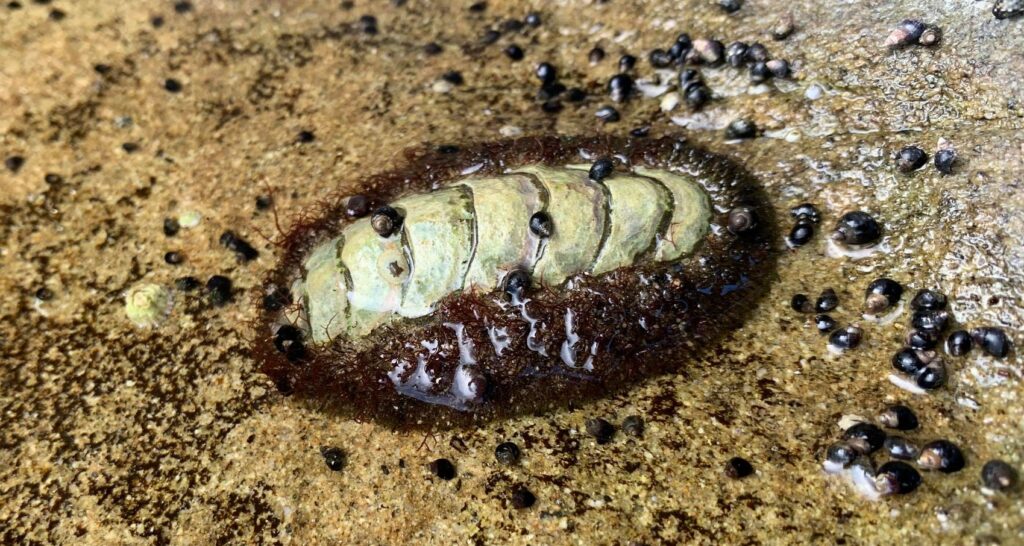Mossy Chiton (Mopalia muscosa)

Mossy chitons are one of the most easily recognizable chiton species in British Columbia. They are known for the abundance of dark bristle-like hairs, or setae that grow on their girdles. Mossy chitons can grow up to 10 cm in length, but most are around 3 cm long. Their fleshy foot is protected by eight bony plates that are all about the same size. On the outside mossy chitons can look quite drab in colour, ranging from dark brown to black. The interior of the shell plates are a vibrant blue, which can give mossy chitons a green colour as their plates are worn down.

Mossy chitons can be found in the waters of southern Alaska to northern Mexico. They are found living in both intertidal and subtidal areas and prefer areas with rocky substrate. They prefer areas with low wave activity and are thus often seen in tidepools. Mossy chitons are quite tolerant of low salinity levels, and thus are commonly found in brackish water in estuaries.
Mossy chitons use their broad flat muscular foot to both cling to rocks and slowly creep along rocky surfaces. They are typically found clinging to rocks and not often seen moving, because they only move at night or if they are fully submerged. If they are knocked off their rocky perch mossy chitons will roll into a ball using their bony plates as armor to protect their fleshy foot. Mossy chitons feed primarily on red and green algae. They are the one of the favourite foods of glaucous-winged gulls and black oystercatchers.
For more information please visit Central Coast Biodiversity and Race Rocks Ecological Reserve


